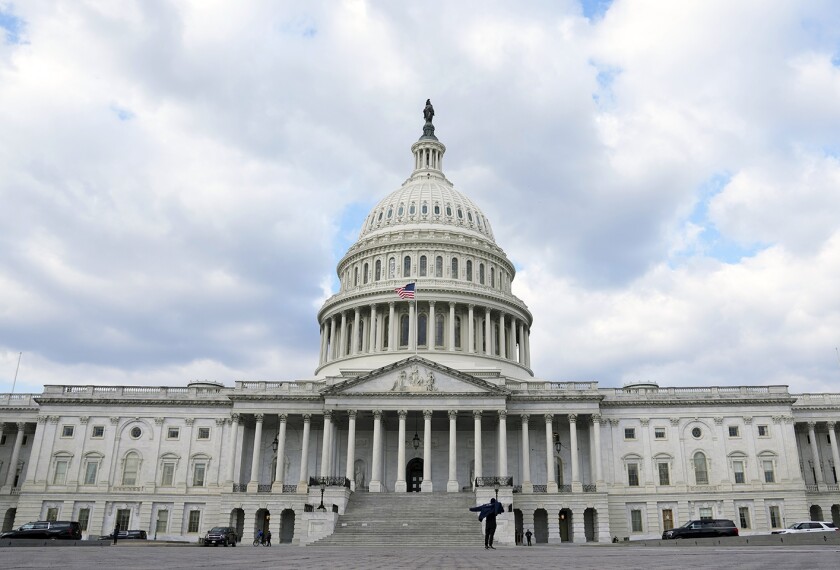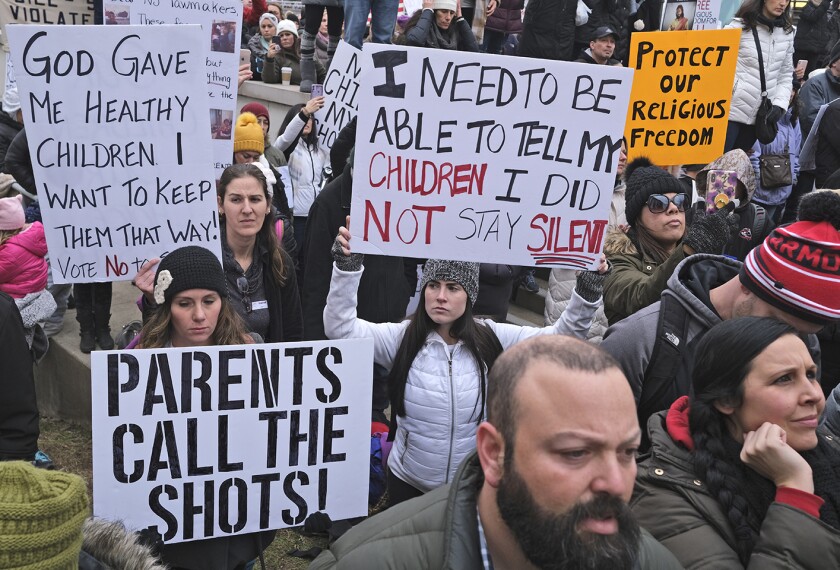State finances remain as bad as they have been in decades, and the fiscal picture isn’t likely to clear up anytime soon, according to a report released last week by the National Governors Association and the National Association of State Budget Officers.
The 2011 fiscal year is shaping up to be the toughest since the recession began, the groups say: A majority of states are contemplating cutting K-12 education.
“I think there’s a sense that [states] have maxed out on tax increases, but we’re also going into a political year,” said Raymond C. Scheppach, the executive director of the Washington-based NGA. He speculated that states would largely balance their budgets by trimming spending.
But after years of cuts, states don’t have many choices left, Mr. Scheppach said.
“States have already gotten the low-hanging fruit, the medium-hanging fruit, and the difficult fruit,” he added.”From here on out, things are going to be very, very difficult.”
He said he expected significant layoffs of state employees, despite signs of job growth in the private sector.
Cuts in spending on schools are increasingly likely. Governors and state lawmakers have been trying to protect K-12 education and health care, but that just might not be possible anymore, according to Scott Pattison, the executive director of NASBO, which is based in Washington.
States “disproportionately cut a lot of areas in state government while attempting to keep health care and education [from facing severe reductions],” Mr. Pattison said at a press conference held last week to discuss the findings. “I’m not sure if every state can continue to do that.”
Continuing Slide
State general-fund spending has declined an unprecedented two years in a row, in both fiscal 2009 and 2010, the report found. It estimates that fiscal 2010 general-fund expenditures will total $612.9 billion among all the states, down from $657.9 billion in the previous fiscal year—an 8 percent decline. In their budget requests, 13 governors proposed spending less in 2011 than in 2010. Overall, 44 states estimate that they will be spending less from their general funds in fiscal 2010 than they did in fiscal 2008, the last year before the recession struck.
The reduction in general-fund spending was linked to a major drop in revenue, including from sales, personal-income, and corporate taxes. The report estimates that revenue collections from those sources fell 11.8 percent from fiscal 2008 to fiscal 2010. (The report does not give comparisons for local property taxes, which are an important revenue source for education in some states.)
Midyear budget cuts, typically considered an option of last resort, have been widespread in fiscal 2010, according to the report. Forty states made midyear cuts in the current fiscal year, totaling $22 billion.
The report argues that figure is significant, compared with the previous economic downturn, when 37 states made $12 billion in midyear reductions in fiscal 2003.
Despite governors’ efforts to protect funding for schools, 34 states have cut spending on elementary and secondary education in fiscal 2010, while 36 states have made cuts to higher education.
What’s more, 31 states have proposed cutting K-12 in fiscal 2011. The proposed cuts for education amount to a total of about $5.5 billion, out of about $22.2 billion in proposed reductions. And 31 states have proposed cutting higher education on top of the K-12 cuts.
Funding Cliff
The $787 billion American Recovery and Reinvestment Act, approved by Congress last year to provide a jolt to the economy, helped make a bad situation more tenable, the report says.
Because of the economic-stimulus measure, the federal share of state spending jumped to 30 percent in fiscal 2009 from 26.3 percent in fiscal 2008. But the stimulus aid was only for fiscal years 2009 and 2010. States would likely be in even worse shape without it, the report concludes.
Mr. Scheppach said his organization is hoping Congress will provide an additional $24 billion in Medicaid funds, which eat up a large portion of state budgets. That legislation is pending in Congress, he said.
But the NGA isn’t pushing for a separate $23 billion measure to stave off education layoffs that is championed by Sen. Tom Harkin, D-Iowa, the chairman of the Senate subcommittee that oversees education spending, and Rep. David R. Obey, D-Wis., the chairman of the House Appropriations Committee. (“Education Jobs Bill Faces Tough Climb in Congress,” June 4, 2010.) Mr. Scheppach said that’s because of concerns from some governors about the legislation’s impact on the federal deficit.





